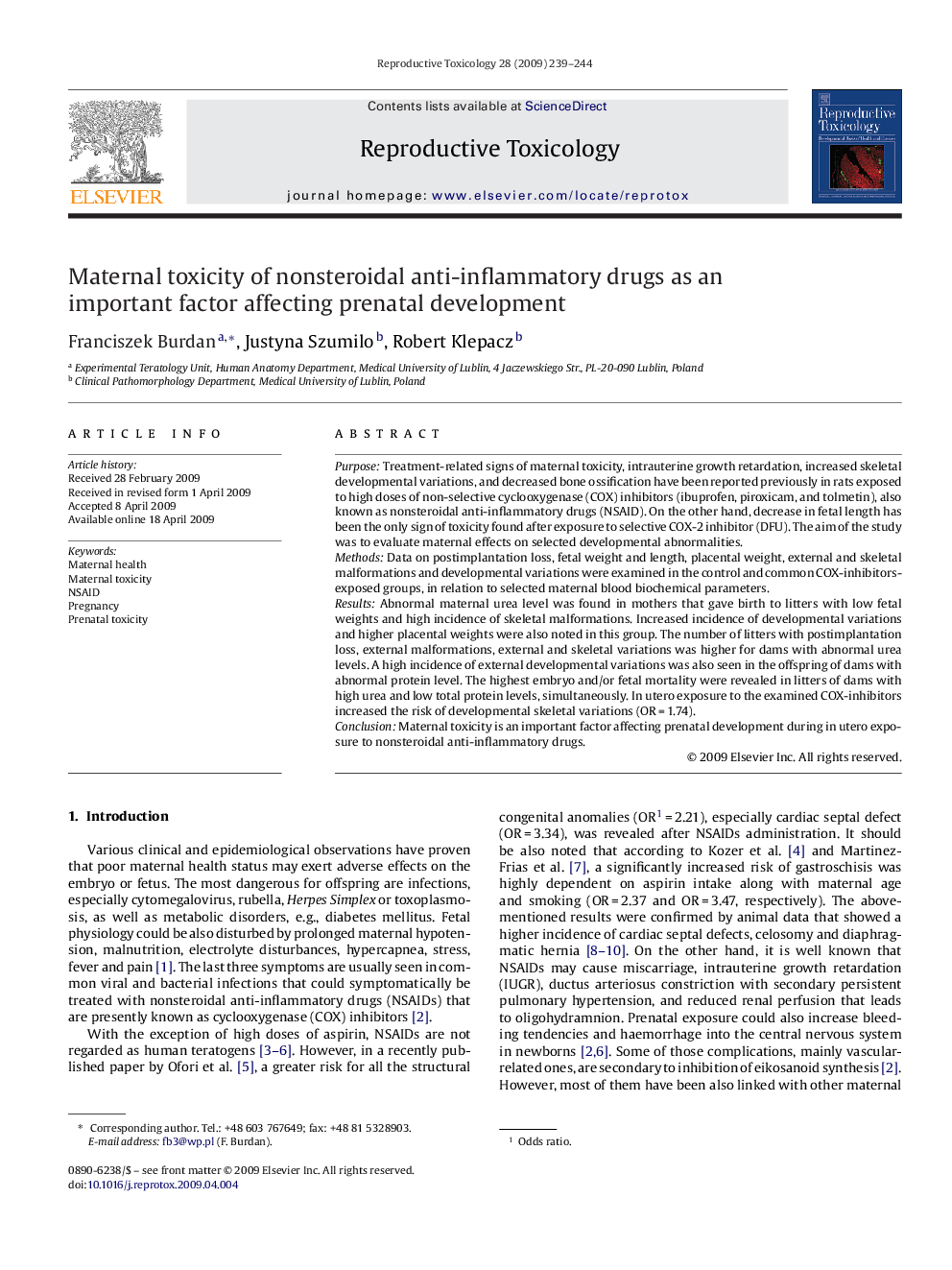| کد مقاله | کد نشریه | سال انتشار | مقاله انگلیسی | نسخه تمام متن |
|---|---|---|---|---|
| 2594955 | 1132285 | 2009 | 6 صفحه PDF | دانلود رایگان |

PurposeTreatment-related signs of maternal toxicity, intrauterine growth retardation, increased skeletal developmental variations, and decreased bone ossification have been reported previously in rats exposed to high doses of non-selective cyclooxygenase (COX) inhibitors (ibuprofen, piroxicam, and tolmetin), also known as nonsteroidal anti-inflammatory drugs (NSAID). On the other hand, decrease in fetal length has been the only sign of toxicity found after exposure to selective COX-2 inhibitor (DFU). The aim of the study was to evaluate maternal effects on selected developmental abnormalities.MethodsData on postimplantation loss, fetal weight and length, placental weight, external and skeletal malformations and developmental variations were examined in the control and common COX-inhibitors-exposed groups, in relation to selected maternal blood biochemical parameters.ResultsAbnormal maternal urea level was found in mothers that gave birth to litters with low fetal weights and high incidence of skeletal malformations. Increased incidence of developmental variations and higher placental weights were also noted in this group. The number of litters with postimplantation loss, external malformations, external and skeletal variations was higher for dams with abnormal urea levels. A high incidence of external developmental variations was also seen in the offspring of dams with abnormal protein level. The highest embryo and/or fetal mortality were revealed in litters of dams with high urea and low total protein levels, simultaneously. In utero exposure to the examined COX-inhibitors increased the risk of developmental skeletal variations (OR = 1.74).ConclusionMaternal toxicity is an important factor affecting prenatal development during in utero exposure to nonsteroidal anti-inflammatory drugs.
Journal: Reproductive Toxicology - Volume 28, Issue 2, September 2009, Pages 239–244